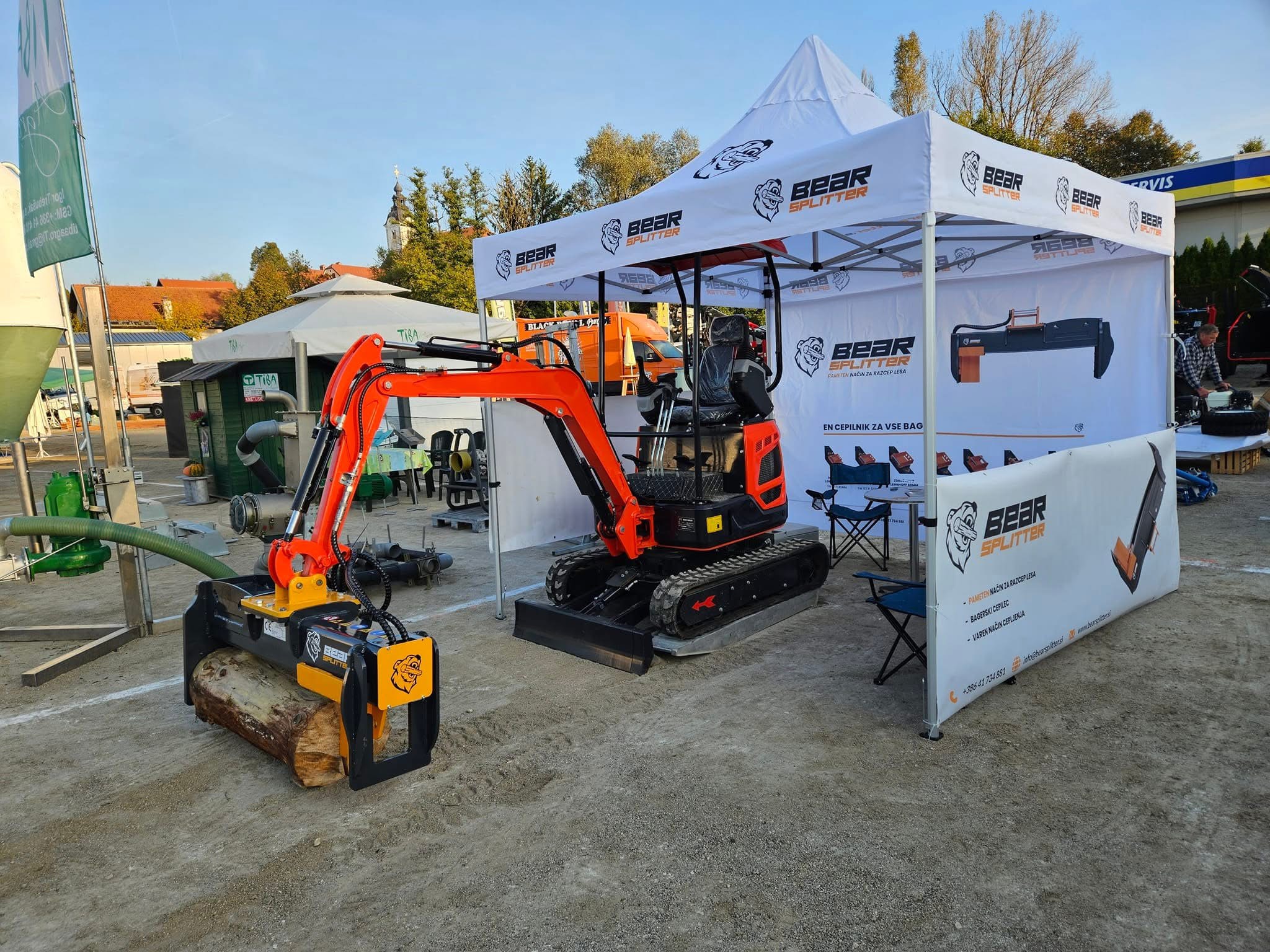Why safety always comes first with wood splitters
Regardless of whether you use wood splitter, slitting and splitting machine, or hydraulic splitter for excavator, safety rules directly affect your health, quality of work and the service life of the machine. If you are thinking about choosing the type and strength, read first guide “Wood splitter: types, power, drives”, for a “smart” approach with the excavator as well as a blog Smart way to split wood - BearSplitter. A complete overview of the offer and contact can be found at bearsplitter.com.
Rule #1 - Personal protective equipment is mandatory
What is mandatory to use?
- Protective glasses or visor.
- Gloves with good grip (pollen control).
- Safety footwear with a cap (log fall).
- Hearing protection in motor/gasoline units or when working next to other mechanization.
Tip: Wood splitters with two-handed control, do not turn off the safety functions - they are designed precisely to protect fingers and palms. For formal procedures and pictograms, see Operating instructions (EN).

Rule #2 - Organized Workplace and Proper Machine Placement
Before you press “start”
- Select flat, dry and load-bearing base; remove ice, mud, loose debris.
- Take care of enough space for the inflow of logs and the removal of logs (trolley, pallets).
- No one in the area moving parts of the machine; take special care of children and pets.
- Price Hydraulic Splitter For Excavator (e.g. BearSplitter) check excavator stability, work field and look flyer (EN) for quick reference of key points.
Why is this important? Uneven worksite and unpredictable log movements increase lateral forces on cleaver and may cause slips, injuries or breakdowns.
Rule #3 - Proper Log Handling and Grafting Technique
Basic technique
- Pollen always align with the axis of the wedge; avoid lateral loads.
- For knotty cuts, graft from the easier side or in layers.
- Do not hold your fingers near the wedge and fasteners; take advantage two-handedness management.
Special cases
- Hard deciduous trees (oak, hornbeam, acacia): select wood splitter with sufficient tonnage; adjust the direction of grafting to the fibers.
- Price Slitting and splitting machine separate the phase cutting in cleavage; both have separate risks and protection requirements.
- If you work with excavator cleaver, stay in the cabin, consider visibility and communication with the team; additional guidelines are in Instructions (EN).
Rule #4 - Maintenance: Hydraulics, Knife and Seals
Regular inspection prolongs the life of the machine
- Hydraulic oil: check pre-season level/purity and replace as directed.
- Knife/Wedge: grind when you notice a “tear” instead of a clean cut; the top knife lengthens the cycle and increases the risk of slipping.
- Pipelines/seals: greasy stains, microcracks and power drops are a warning for replacement.
Rule #5 - Never “by force”: the right choice of machine for safe work
A big part of security is the right choice of machine. If the log has a diameter or structure that exceeds the capabilities of your wood splitter, lateral forces, jams and dangerous “bounces” appear.
If you process very large diameters and you want highest productivity, consider Hydraulic Splitter For Excavator BearSplitter - why this is a “smart way”, we explain in the article A smart way to graft wood; a full overview of key specifications and mounting options is available at bearsplitter.com.
Common Mistakes That Lead to Injuries (and How to Fix Them)
- Without PPE: the fastest way to eye/finger injuries → always glasses/visor, gloves, safety shoes.
- Uneven Workplace: machine slide or log → prepare a flat surface and a clear path for removal.
- Under tonnage: machine “markets”, does not split → choose a more powerful wood splitter or layer-by-layer grafting.
- Disabled security features: two-handed is there for a reason → do not bypass the sensors.
- Poor maintenance: top wedge, leaks in hydraulics → more jams and more danger.
Conclusion
For more information, please visit our website bearsplitter.com
👉 Download flyer - summary of advantages and comparisons.

